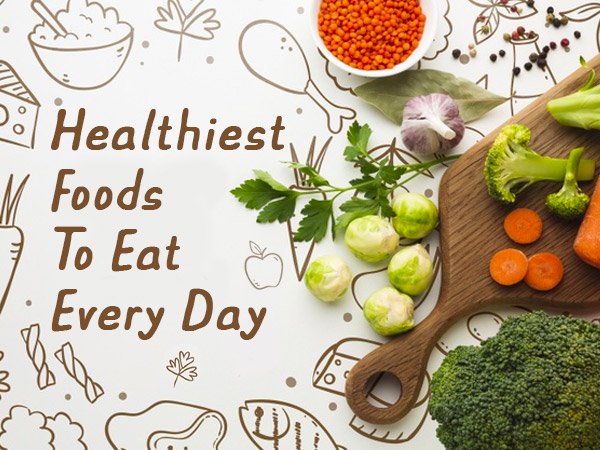
You don't need to give up your favorite foods, even though there are many healthy foods that you should avoid if GERD is present. Your symptoms will improve and your chances of getting GERD are lower if you make changes to your diet. One of the best things you can do to improve your diet is to eliminate citrus fruits and replace them with non-citrus ones. You can also eat less high-fat vegetables.
To add flavor to your meals, fresh herbs can be used in place of fruits and veggies. Just make sure that they aren't too acidic. Onions can be used to enhance flavor and not cause irritation. For the same effect, try adding green or chopped shallots. It doesn't matter which type of onion it is, you should start small and then increase gradually.
Tomatoes, tomato sauce, and other tomato-based foods should be avoided if you have GERD. Tomatoes contain high levels of lycopene which is an effective cancer fighter. This acidity can, however, irritate already inflamed tissue in our esophagus. You should avoid them as often as possible. Watermelon, watermelons and tomatoes are other foods that contain Lycopene.

You should not eat pizza every day if you are able. However, pizza should be eaten at least once per week. Combining spicy foods with fatty foods can lead to GERD symptoms. Avoid fried and fatty foods. Avoid chocolate, coffee and alcohol. Acid reflux can be caused by caffeine. Those with GERD are advised to reduce their intake.
You should not eat spicy food regularly. Although onions are a healthy staple, they can cause heartburn. Onion stimulates production of acid, bile and other nutrients. Thankfully, cooking onions can help smother the fire. Adding onion to the list of foods to avoid if you suffer from GERD can help to manage the condition. These aren't the only foods you should avoid if you have GERD. However, it is important to be aware of them.
While many of these foods are advisable to avoid, you may find that certain ones can make your symptoms worse. For example, spicy foods are best avoided if you have GERD. These foods can interfere with the lower end of the esophageal system, increasing stomach acid. Because chocolates contain caffeine and cocoa, you should avoid them. These substances are acidic, and should all be avoided when you have GERD.
It is important to be aware of which foods trigger your GERD. Certain foods can aggravate symptoms while others can cause severe pain. Citrus fruits, citrus juice and alcohol are all good foods to avoid if you have GERD. You must limit your intake of these foods to preserve your health. You should reduce the intake of these food items from your diet. Talk to your doctor if you are unsure which foods to avoid if you have GERD.

If you have GERD, you should avoid alcohol and spiced foods. The ingredients in these foods can contribute to the occurrence of GERD. This is why you should limit the amount of these foods in your diet. Also, remember that caffeine as well as alcoholic beverages can be acidic. Avoid eating certain foods if you think your GERD symptoms might be due to a food.
Citrus fruits, another food to avoid, is GERD. Consuming grapefruit and oranges are high in citric acid and can make your symptoms worse. It is important that you limit your intake of citrus fruits. You may not have to completely eliminate all citrus, but you should limit it to a moderate level. Instead, try to eat the fruit and drink as often as you can. But, if you must, you should limit your citrus fruit consumption.
You should avoid dairy products if your GERD is severe. Some people with GERD say dairy products can soothe their stomachs, but they can also aggravate the condition. Additionally, avoid caffeine, alcoholic drinks, as well as caffeine. Your diet could also be a factor in your GERD symptoms. Talk to your doctor to find out about any food allergies. You'll be able to make a healthier choice if you're already taking medications for GERD.
FAQ
What are the best 10 foods to eat?
These are the top 10 foods to eat.
-
Avocados
-
Berries
-
Broccoli
-
Cauliflower
-
Eggs
-
Fish
-
Grains
-
Nuts
-
Oats
-
Salmon
What is the working principle of an antibiotic?
Antibiotics kill harmful bacteria. To treat bacterial infections, antibiotics are used. There are many types and brands of antibiotics. Some can be taken orally, others are injected and some are applied topically.
Antibiotics are often prescribed to people who have been exposed to certain germs. One example is if someone has had chickenpox and wants to prevent shingles. Penicillin might also be administered to someone with strep throat. This will help prevent the possibility of developing pneumonia.
A doctor should give antibiotics to children. Children are at greater risk than adults for developing serious side effects from taking antibiotics.
The most common side effect of antibiotics is diarrhea. Side effects of antibiotics include diarrhea, stomach cramps and nausea. These side effects usually disappear once treatment has ended.
Why does weight change as we age?
How do I know if my bodyweight changes?
Weight loss occurs when there is less fat than muscle mass. This means that you must consume more calories than you use daily. Reduced activity is the leading cause of weight gain. Other factors include stress, illness and pregnancy. When there is more fat than muscles, it's called weight gain. It occurs when people eat more calories than what they use in a given day. It can be caused by overeating or increased physical activity as well hormonal changes.
The primary reason we lose weight is that we consume less calories than what we burn. By exercising regularly, our metabolism rates increase which in turn burns more calories during the day. But, this does not mean that we will be thinner. It is important to know if we are losing weight or gaining muscle. If we are burning more calories than what we eat, then we will lose weight. But if you consume more calories than you burn, you're actually storing them for fat.
As we age we tend to be slower in moving and thus we don't move nearly as much. We also tend to eat less food than we did when we were younger. We tend to gain weight. On the flipside, we are more muscular than we really need and appear bigger.
Without regularly weighing yourself, it is impossible to gauge how much weight you have lost. There are many ways to determine your weight. There are many ways to measure your weight. You can check your waist, hips, thighs, arms and legs. Some prefer to use bathroom scales, while others prefer tape measures.
If you want to track your progress, you should try weighing yourself once a week and measuring your waistline once a month. You can also take photographs of yourself every few years to track how far your progress has been.
Online, you can find out your height and weight. If you're tall at 5'10", and weigh 180lbs, your weight would be 180.
Statistics
- WHO recommends reducing saturated fats to less than 10% of total energy intake; reducing trans-fats to less than 1% of total energy intake; and replacing both saturated fats and trans-fats to unsaturated fats. (who.int)
- According to the 2020 Dietary Guidelines for Americans, a balanced diet high in fruits and vegetables, lean protein, low-fat dairy and whole grains is needed for optimal energy. (mayoclinichealthsystem.org)
- In both adults and children, the intake of free sugars should be reduced to less than 10% of total energy intake. (who.int)
- According to the Physical Activity Guidelines for Americans, we should strive for at least 150 minutes of moderate intensity activity each week (54Trusted Source Smoking, harmful use of drugs, and alcohol abuse can all seriously negatively affect your health. (healthline.com)
External Links
How To
What does the "vitamins” word mean?
Vitamins are organic substances found naturally in food. Vitamins help us absorb nutrients from foods we eat. Vitamins are not made by the body, so they must be obtained through food.
Two types of vitamins exist: water-soluble vitamin and fat-soluble vitamin. Water-soluble vitamins dissolve quickly in water. Vitamin C,B1(thiamine), B2 (2riboflavin), and B3 (3niacin), as well as vitamin C,B1, B2 (riboflavin), and B3 (niacin), vitamin B6 (pyridoxine), vitamin folic acid (biotin), pantothenic, and choline are examples. The liver and fat soluble vitamins are stored within the liver and in fatty tissue. Examples include vitamin D, E, K, A, and beta carotene.
Vitamins are classified according to their biological activity. There are eight major categories of vitamins.
-
A - Essential for healthy growth and health maintenance.
-
C - essential for nerve function and energy generation.
-
D - necessary for healthy bones and teeth.
-
E - Required for good vision & reproduction
-
K - Required for healthy nerves and muscles.
-
P - vital for building strong bones andteeth.
-
Q - Aids in digestion and absorption.
-
R – Required for the formation of red blood vessels.
The recommended daily allowance (RDA), for vitamins, varies depending upon age, gender, or physical condition. The U.S. Food and Drug Administration (FDA) sets the RDA values.
For example, the RDA for vitamin A is 400 micrograms per dayfor adults 19 years or older. However, pregnant women need 600 micrograms per day because it is important for fetal development. Children ages 1-8 require 900 micrograms per day. Babies under one-year old require 700 mg per day. Between 9 and 12 years of age, however, this drops to 500 mg per day.
Children aged between 1-18 years require 800 micrograms of sugar per day, while overweight children need 1000 micrograms. Children who are underweight receive 1200 micrograms every day to meet their nutritional requirements.
Children between 4 and 8 years old with anemia will need 2200 micrograms daily of vitamin C.
2000 micrograms is the minimum daily intake for adults over 50 years old to maintain good health. Mothers who are pregnant, nursing, or have a high nutrient need will require 3000 micrograms a day.
Adults over 70 require 1500 micrograms each day, since they lose around 10% of their muscle mass every decade.
Women who are pregnant or lactating need more than the RDA. Pregnant mothers need 4000 micrograms per daily during pregnancy and 2500 after giving birth. Breastfeeding mothers need to consume 5000 micrograms every day when breastmilk has been produced.